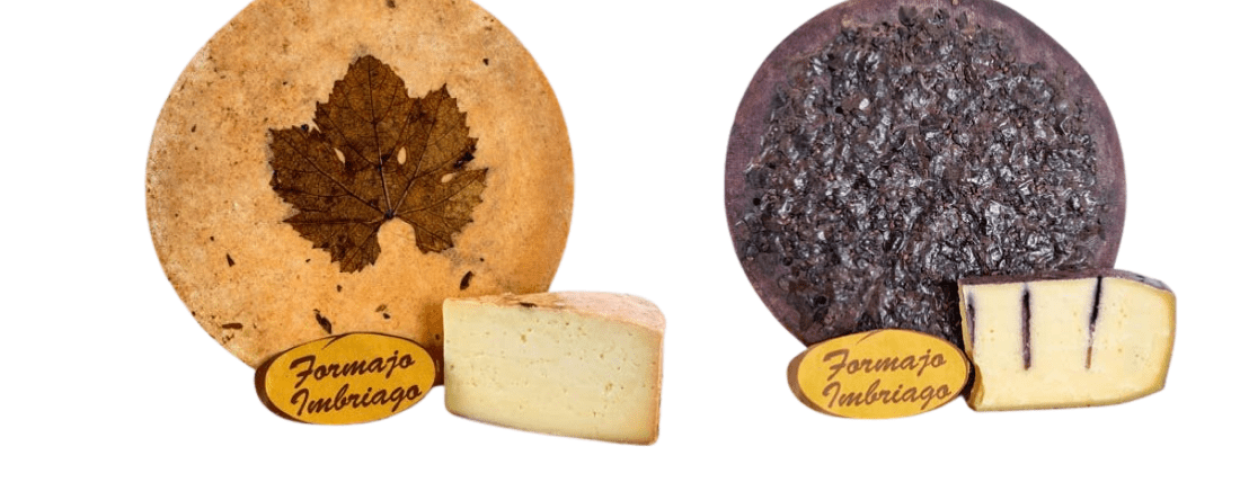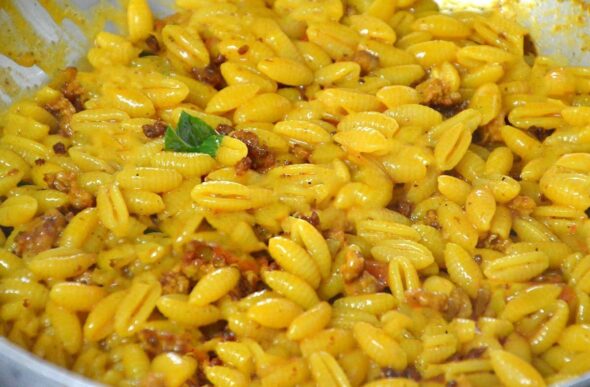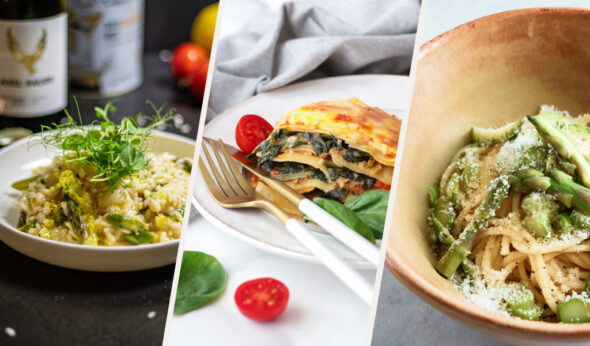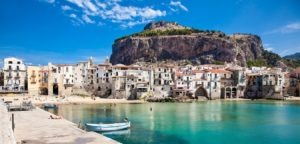The drunk technique of cheese involves immersing the wheels in tubs of fresh pomace that has just been drawn off but not pressed, which are therefore still soft. This process can be repeated especially for aged cheeses. In this way, the rind and also the paste takes on a different colour, according to the pomace used, also acquiring the aroma of the must.
Aged cheeses are usually drunk for at least 60 days up to 24 months. They must be of good quality and have no defects. The duration of the “immersion” varies from 8 to 10 days for mature cheeses, while around 30 days for aged ones. Once extracted they dry and clean, then they are left to mature for another 15 or 30 days before tasting them. Semi-cooked cheeses, such as Asiago or Montasio, are more suitable for this process. The rind takes on a particular marked straw yellow colour if the pomace comes from white grapes, or dark and intense purple if the pomace comes from red grapes.
This particular technique seems to have been invented during the First World War by the inhabitants of Treviso, after the battle of Caporetto. To protect the cheeses from the raids of hungry Austro-Hungarian soldiers, the cheeses were hidden under the pomace already used for winemaking. After the threat, the inhabitants fished them out and noticed their particular flavour, they managed to reuse the technique. On the other hand, it is said that pomace was used to soften the crust of cheeses in the absence of oil, which became too expensive for cheesemakers in times of war.
The latest trend is to drunken cheeses in “barrique” of red or white wines. The oak wood knows how to intensify and make unique aromas and flavours. This is the case of “Ubriaco al Prosecco“, which is bathed in gallons of sparkling Prosecco wine along with skins, seeds, and leftovers from the winemaking process to extract the unique sweet, delicate aroma of the wine and complex flavours. Almost an identical process is used to make “Ubriaco Riserva matured in Fosco wine“, but instead of Prosecco, the cheese is submerged in red Refosco wine.
The best season to try drunken cheese is from late fall through early summer and can be used both as a snack during aperitifs and as an ingredient for first or second courses.
Here’s how drunken cheese is produced, enjoy!









